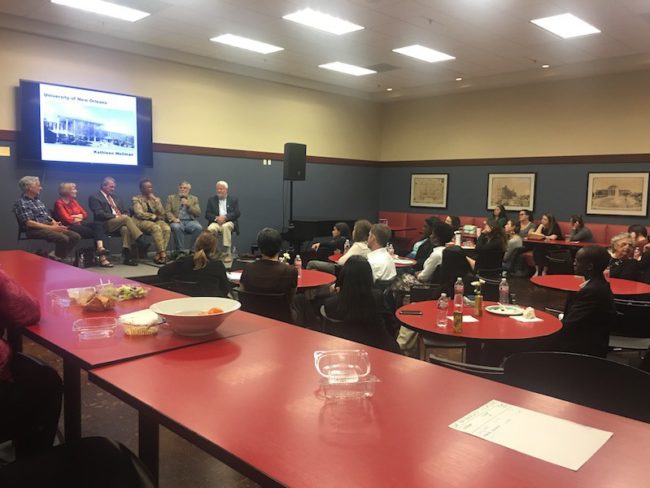
Dr. Tom Tunks, a Southern Methodist University professor of music, was a student of Michigan State University during the late 1960s and recalled the different fashion trends that students wore on campus.
Tunks was one of six Southern Methodist University professors that spoke at “The 60s Plus 50” panel discussion hosted by SMU’s Embrey Human Rights Program Thursday evening, where professors recounted their college experiences during this turbulent time in history.
“We all wanted to be different but too many of us were different in the same way,” Tunks said. “There were flowers pasted on Volkswagons, bellbottoms; I grew my hair long and grew a beard and I had a ponytail and all that stuff, and I thought I was really different, and I was not different at all.”
The other panelists included Professor Tony Pederson, Dr. Steven Sverdlik, Dr. Kathleen Wellman, Professor Barbara Hill-Moore, and Dr. David Matula.
Dr. Kathleen Wellman was a student at University of New Orleans in the 60s and said although the university was not a very radical campus, she still participated in any anti-war demonstrations there were.
“There was a great sense of optimism about what people might be able to accomplish through protest,” said Wellman, a professor of history. “That’s one of the things that certainly reemerged as a connection between your generation and mine. The idea that people can be mobilized and people can act and they can be effective.”
Barbara Hill Moore says as a black student, she was not able to do anything off campus which inhibited her efforts to protest change. Students on her college campus, Lincoln University of Missouri, protested not being able to go to the bowling alley near her college campus. Students would also protest by signing up for the Selma bus trips, but were limited by her school’s administration.
“We were in such a conservative and protective environment that before you could sign anything our counselors and administrators in charge were asking for your parental permission before you could do anything if you weren’t 21,” said Moore, a professor of voice. “Nobody was and they shut things down in that way, so the idea of protesting had to be a major plan and then had to be secretive until the moment.”












